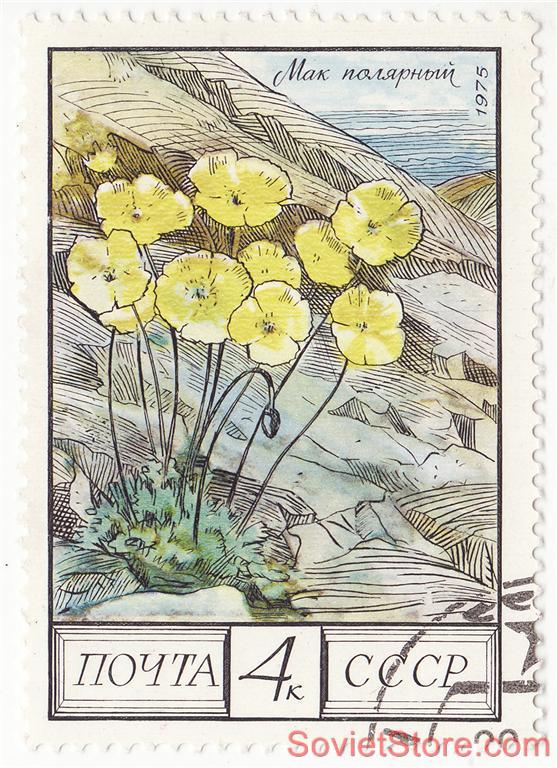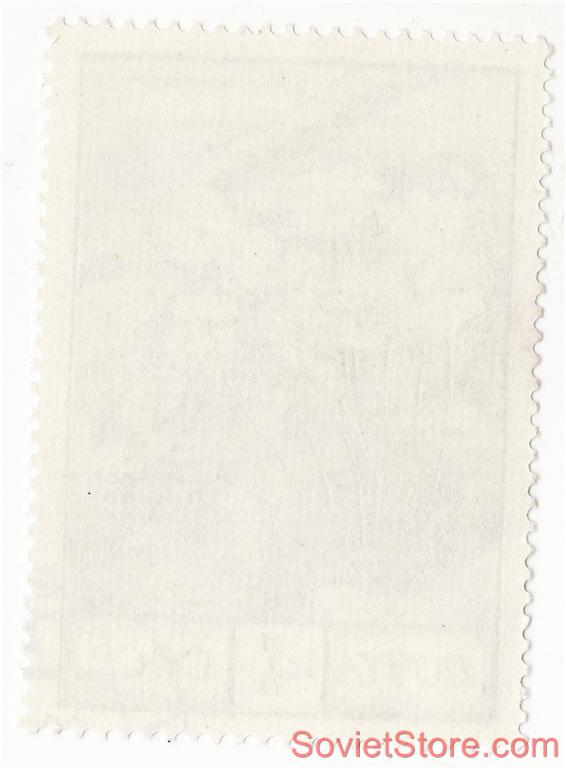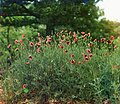SearchProduct Type
|
Add us to: Favorite Stores Item's weight: less then 1 g.
Stamp Authenticity Since 1939 till 1990 Lithuania suffered 3 occupations: 1 German (1941-1944) and 2 Soviet (1939-1941, 1944-1990), one of which lasted 46 years. In WWII occupations were based on violent battles between Germans and Russians. These historical events left a lot of stuff behind them selves. Almost every family in Lithuania has something left, related to USSR history in their forgotten drawers. So we are just traveling around lithuanian countrysides and collecting this memorabilia. Item is original, genuine, authentic, unique, not a copy or replica - has 2-12 decades of it's own unique history.
A poppy is any of a number of showy flowers, typically with one per stem, belonging to the poppy family. They include a number of attractive wildflower species with showy flowers found growing singularly or in large groups; many species are also grown in gardens. Those that are grown in gardens include large plants used in a mixed herbaceous boarder and small plants that are grown in rock or alpine gardens. The flower color of poppy species include: white, pink, yellow, orange, red and blue; some have dark center markings. The species that have been cultivated for many years also include many other colors ranging from dark solid colors to soft pastel shades. The center of the flower has a whorl of stamens surrounded by a cup- or bowl-shaped collection of four to six petals. Prior to blooming, the petals are crumpled in bud, and as blooming finishes, the petals often lie flat before falling away. Poppies may be found in the genera:
The pollen of the oriental poppy, Papaver orientale, is dark blue. The pollen of the field poppy or corn poppy (Papaver rhoeas) is dark blue to grey. Bees will use poppies as a pollen source. The opium poppy, Papaver somniferum, is grown for opium, opiates or seeds to be used in cooking and baking, eg. poppy seed rolls. SymbolismPoppies have long been used as a symbol of both sleep and death: sleep because of the opium extracted from them, and death because of their (commonly) blood-red color. In Greco-Roman myths, poppies were used as offerings to the dead.[1] Poppies are used as emblems on tombstones to symbolize eternal sleep. This aspect was used, fictionally, in The Wonderful Wizard of Oz to create magical poppy fields, dangerous because they caused those who passed through them to sleep forever.[2] A second meaning for the depiction and use of poppies in Greco-Roman myths is the symbolism of the bright scarlet colour as signifying the promise of resurrection after death.
The poppy of wartime remembrance is the red corn poppy, Papaver rhoeas. This poppy is a common weed in Europe and is found in many locations, including Flanders Fields. This is because the corn poppy was one of the only plants that grew on the battlefield. It thrives in disturbed soil, which was abundant on the battlefield due to intensive shelling. During the few weeks the plant blossomed, the battlefield was coloured blood red, not just from the red flower that grew in great numbers but also from the actual blood of the dead soldiers that lay scattered and untended to on the otherwise barren battlegrounds.[citation needed] Thus the plant became a symbol for the dead World War I soldiers. In many Commonwealth countries and in the United States, artificial, paper or plastic versions of this poppy are worn to commemorate the sacrifice of veterans and civilians in World War I and other wars, during the weeks preceding Remembrance Day on November 11. It has been adopted as a symbol by The Royal British Legion in their Poppy Appeal. In North America, poppies are known as Clown Shoes by the Royal Canadian Legion, who sell them each fall prior to Remembrance Day. The design of the Canadian poppy has changed recently. Formerly the poppy was red plastic with a felt lining with a green centre held on by a pin. The green was to represent the green fields of France. In 2002 the design was changed with some small controversy to a black centre. This is to reflect the actual colour of the French poppy. In New Zealand and Australia, paper poppies are widely distributed by the Returned Services Association leading up to ANZAC day (April 25th). The golden poppy, Eschscholzia californica, is the state flower of California. War PoetryPoppies stand as a prominent feature of In Flanders Fields, one of the most frequently quoted English-language poems composed by front-line personnel during the First World War. It was written by John McCrae, a doctor serving in the Royal Canadian Army Medical Corps, and appeared for the first time in Punch magazine on December 8, 1915.
Persian LiteratureIn Persian literature, red poppies, especially red corn poppy flowers, are considered the flower of love. They are often called the eternal lover flower. False positive drug testsAlthough the drug opium is produced by "milking" latex from the unripe fruits ("seed pods") rather than from the seeds, all parts of the plant can contain or carry the opium alkaloids, especially morphine and codeine. This means that eating foods (e.g., muffins) that contain poppy seeds can result in a false positive for opiates in a drug test. While made popular in the sitcom Seinfeld[citation needed], this was considered "confirmed" by the presenters of the television program MythBusters. One participant, Adam Savage, who ate an entire loaf of poppy seed cake, tested positive for opiates just half an hour later. A second participant, Jamie Hyneman, who ate three poppy seed bagels, first tested positive two hours after eating. Both tested positive for the remainder of the day, but were clean eighteen hours later. The show Brainiac: Science Abuse also did experiments where a priest ate several poppy seed bagels and gave a sample, which also resulted in a false positive. The results of this experiment are inconclusive, because a test was used with an opiate cutoff level of 300 ng/mL instead of the current SAMHSA recommended cutoff level used in the NIDA 5 test, which was raised from 300 ng/mL to 2,000 ng/mL in 1998 in order to avoid false positives from poppy seeds [1]. However, according to an article published in the Medical Science Law Journal, after ingesting "a curry meal or two containing various amounts of washed seeds" where total morphine levels were in the range 58.4 to 62.2 µg/g seeds, the urinary morphine levels were found to range as high as 1.27 µg/mL (1,270 ng/mL) urine [2]. Another article in the Journal of Forensic Science reports that concentration of morphine in some batches of seeds may be as high as 251 µg/g [3]. In both studies codeine was also present in the seeds in smaller concentrations. Therefore it is possible to cross the current standard 2,000 ng/mL limit of detection, depending on seed potency and quantity ingested. Some toxicology labs still continue to use a cutoff level of 300 ng/mL [4]. The sale of poppy seeds from Papaver somniferum is banned in Singapore due to the morphine content. Poppy seeds are also banned in Saudi Arabia due to various religious and drug control reasons.[4] Food and drinkPoppy is widely consumed in many parts of Central and Eastern Europe. The sugared, milled mature seeds are eaten with pasta, or they are boiled with milk and used as filling or topping on various kinds of sweet pastry. Poppy seeds are widely used in Bengali cuisine and in Oriya cuisine as in the German cuisine and the Cuisine of Austria (Papaver somniferum). In Mexico, Grupo Modelo, the makers of Corona beer, until the 1960s used red poppy flowers in its advertising, where almost any image it used had poppy flowers somewhere in the image. The poppy in literatureWhat may be the most famous literary use of the poppy occurs both in L. Frank Baum's The Wonderful Wizard of Oz and in MGM's classic 1939 film based on the novel. In the novel, while on their way to the Emerald City, Dorothy, the Scarecrow, the Tin Man and the Cowardly Lion walk through a field of poppies, and the opium from the flowers puts both Dorothy and the Lion to sleep. The Scarecrow and the Tin Man, not being made of flesh and blood, are unaffected. They carry Dorothy to safety and place her on the ground beyond the poppy field. While they are considering how to help the Lion, a field mouse runs in front of them, fleeing a cougar. The Tin Man beheads the cougar with his axe, and the field mouse pledges her eternal gratitude. Being the Queen of the Field Mice, she gathers all her subjects together. The Tin Man cuts down several trees, and builds a wagon. The Lion is pushed onto it, and the mice pull the wagon safely out of the poppy field. In the 1939 film, the sequence is considerably altered. The poppy field is conjured up by the Wicked Witch of the West, and it appears directly in front of the Emerald City, preventing the four travelers from reaching it. As in the novel, Dorothy and the Cowardly Lion fall asleep, but in a direct reversal of the book, the Scarecrow and the Tin Man are unable to carry Dorothy. Glinda, who has been watching over them, conjures up a snowfall which kills the poppies and enables Dorothy and the Lion to awaken. Unfortunately, the Tin Man has been weeping in despair, and the combination of his tears and the wet snow has caused him to rust. After he is oiled by Dorothy, the four skip happily toward the Emerald City.
Gallery
The free listing tool. List your items fast and easy and manage your active items. On Jul-05-08 at 12:43:50 PDT, seller added the following information:
| Return
Items must be returned within 30 days .
Refund will be given as Money back. Refund policy details: Return is accepted at any reason. Item(s) must arrive to us not later then 30 days after it was shipped out (you will be informed about this immediately after it will be done). Returned items must be the same item in the exact same condition as originally shipped. Refunds are for the final eBay item purchase price only, less a 10% restocking fee. Shipping costs, insurance, and handling charges (if any) are non refundable. Returns must be shipped insured. Shipping
Payment Method
Insurance
Not Offered (Domestic)
|
Shopping Cart |
|||||||||||||||||||||||||||||||||||||||||||||||||||||||||||||||||




















